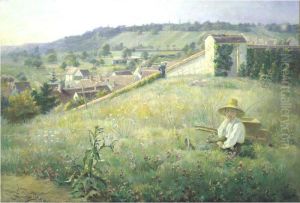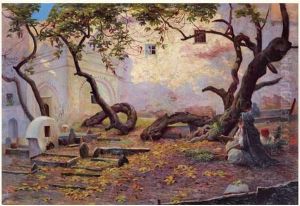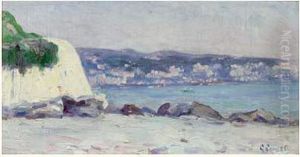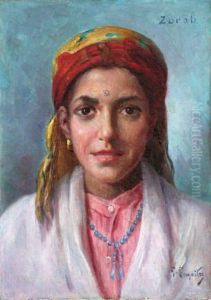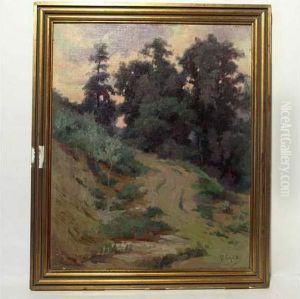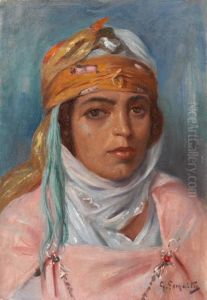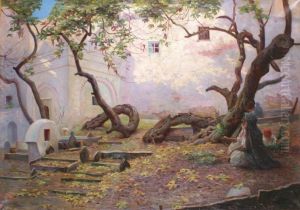Lemaitre Gustave Paintings
Gustave Lemaître was a French painter associated with the Barbizon School, a group of artists working in the village of Barbizon near the Forest of Fontainebleau who focused on landscape painting and laid the groundwork for Impressionism. Born in 1793, Lemaître's life spanned a dynamic period in French history, witnessing the aftermath of the French Revolution, the Napoleonic era, and the rise of modernity in the mid-19th century.
Lemaître's early life and training are not extensively documented, but like many artists of his time, he likely received a classical education in the arts, learning to paint landscapes in the traditional manner. Influenced by the works of the Old Masters and by contemporary artists such as Théodore Rousseau and Jean-François Millet, Lemaître developed a style that emphasized the natural beauty and the emotional impact of the landscape. His paintings often featured rural scenes, forest clearings, and the play of light and shadow, executed with a loose brushwork that suggested the textures and movement of the natural world.
Despite his association with the Barbizon School, Lemaître never achieved the same level of fame as some of his contemporaries. His works were exhibited in salons and gained some recognition, but he remained a relatively minor figure in the art world. Nevertheless, his contribution to the development of landscape painting was significant, and his works are now considered important for their role in the transition between classical landscape painting and the more modern approaches that would emerge later in the century.
Gustave Lemaître's later years were marked by a continued dedication to his art, though he never attained great wealth or widespread fame. He died in 1870, leaving behind a body of work that captures the quiet beauty of the French countryside and the early stirrings of a new artistic movement. Today, Lemaître's paintings can be found in various art collections, where they are appreciated for their historical value and their place within the narrative of French art history.
